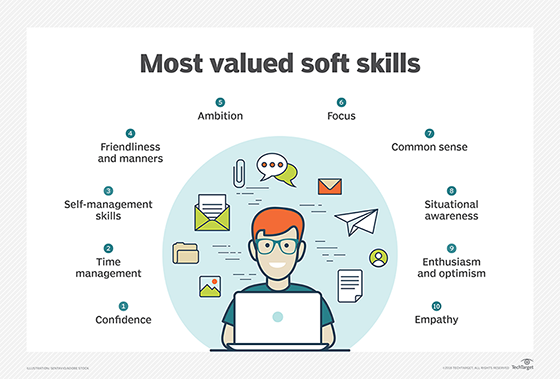What is management information systems (MIS)?
Management information systems (MIS) is a department within an enterprise responsible for controlling the hardware and software systems that the organization uses to make business-critical decisions. In addition to describing a department within a company, the term MIS can also refer to a type of computer software used to store, organize and analyze information.
Today, the term MIS is used broadly in a variety of contexts. These include but are not limited to the following:
- Decision support system (DSS) software.
- Resource and people management applications.
- Project management.
- Database retrieval applications.
What is MIS in a software context?
MIS software tracks sales, inventory, equipment and related business information. In the past, these applications ran on mainframe computers. However, as computing systems evolved, organizations began to run MIS software on client-server systems. Today, MIS applications are commonly run in the cloud.
Types of MIS software
The following are the four main types of MIS software:
- DSS. Decision support system software analyzes business data to assist managers with decision-making. For example, a DSS could project revenue figures based on assumptions about new product sales.
- Transaction processing system. A TPS processes the routine transactions associated with a business. Examples include payroll processing, order processing for an e-commerce business and invoicing.
- Management support system. An MSS stores and organizes data, enabling end users to generate reports and analyze data to address business needs and inform planning. A data warehouse is an example of an MSS.
- Expert systems. An expert system provides managers with insights and advice based on AI. In an expert system, AI is trained to simulate the knowledge of a human expert in a particular field.
The early history of MIS departments
The MIS department was originally an organization's entire IT department. From the 1960s through the early 1980s, practitioners and business schools generally referred to MIS rather than IT.
In these early days, enterprise computing's primary role was to help the chief executive officer and chief financial officer (CFO) with information systems management for tasks that were key to running the business, such as order entry, accounting and budgeting. No enterprise applications yet existed; instead, programmers painstakingly wrote code to carry out these functions, usually on a mainframe.
These systems were business-critical, meaning the business would fail if it had to go back to manual methods. Thus, the company would be in danger if the MIS department were unsuccessful. The CFO typically oversaw the MIS department to ensure developers and administrators delivered the accounting needed.
Shifts in roles and terminology: From MIS to IS to IT
In the 1980s, with the advent of PCs that could run spreadsheets, the scope of enterprise computing responsibilities began to change. Adopting personal spreadsheets took business-critical processes out of the domain of upper management.
As a result, MIS departments serviced a wider range of users and deployed both external and internal software programs. To reflect this new set of internal customers, organizations began to change the name of the MIS department to IS. Through this shift, the MIS team became only one -- yet still vital -- part of the overall information services department.
In the 1990s, the rise of enterprise applications brought about a new set of IS tasks. Companies succeeded by providing better services to consumers than their competitors by using a mix of enterprise and homegrown applications.
These applications also performed a wider range of functions than the MIS department had previously handled -- for example, enterprise resource planning, supply chain management and sales force automation. Many of these tasks were not solely the property of the IS department. Outside vendors, outsourcers and line-of-business computing departments now claimed a share of enterprise computing.
In enterprise architecture, the IS department became more of a strategic director of the organization's software and underlying hardware technologies and less of a controlling central entity. Again, organizations began to change the department's name to reflect its new role: IS departments became known as information technology (IT), and the original MIS department became a smaller part of the larger whole.
MIS departments vs. IT management
Although both MIS and IT are related to the use of technology in business, they have different focuses. An MIS team typically manages the systems critical to the company's survival, including accounting and order entry. In many businesses, MIS teams also handle legacy software and hardware.
IT maintains the organization's computing infrastructure, including modernizing legacy systems. However, IT is a much broader field than MIS and supports its overall objectives. IT manages a wider range of technologies -- from an organization's communication networks to its databases and the use of cloud computing and AI. MIS uses this technology to support and improve the organization's business processes and decision-making.
The business value of MIS departments and applications
MIS software and MIS departments can help companies gain a competitive advantage, as both help organizations increase productivity by enabling workers to spend more time on value-generating tasks.
The data MIS software controls can help managers make better decisions related to sales, manufacturing and resource allocation. Similarly, the MIS department plays a vital role in providing support services within an organization, including the following:
- Governance. Governance involves systems and controlling employees' use of computing systems. The MIS department defines, manages and enforces the rules covering how and if employees can access the company's technologies and network infrastructure. The MIS department is responsible for IT security and enforcing codes of conduct related to computer systems use.
- Infrastructure. An organization's IT infrastructure comprises the technology systems that support the business' day-to-day functioning, such as phones, desktop and laptop computers, servers, application software and cloud computing. The MIS department provides internal help desk and support services, assisting employees and troubleshooting issues related to the infrastructure.
- Data management. Data management involves provisioning and managing systems that enable employees to access and update critical business data. The MIS department is responsible for ensuring the availability and security of the organization's data management systems.
MIS career outlook
The U.S. Bureau of Labor Statistics projects the field of MIS to grow 17% by 2033. Companies are hiring MIS graduates with bachelor's degrees in IT management, computer science or related fields.
A career in MIS could entail evaluating business applications and selecting those that will help the enterprise achieve its goals in sales, marketing or another area. The MIS department then deploys and manages these applications throughout their lifecycle.
AI and machine learning create opportunities for MIS professionals to use data-driven decision-making to make faster and more accurate business decisions.
A career in MIS requires the following skills:
- Technical skills. Candidates should be able to troubleshoot and optimize computer systems and applications. They should also be able to track metrics related to how effectively an application supports business objectives.
- Business skills. The MIS job description generally includes finance and IT administration duties and extensive planning and analysis for large-scale, business-critical projects, often requiring finance and economics experience or education.
- Communication and collaboration skills. Effective communication is essential to support decision-making and operations. By defining the scope and purpose of the IT project, an MIS professional can avoid confusion and establish a common understanding with stakeholders.
- Problem-solving and analytics skills. Effective MIS employees can analyze business problems and identify solutions using technology skills and business systems.
- Compliance skills. MIS professionals are increasingly held to high standards in an environment where compliance and regulatory requirements have steadily increased. Maintaining awareness of these requirements is essential.
- Soft skills. An MIS professional must also have soft skills, such as common sense, attention to detail and the ability to communicate with the business units that rely on the MIS department.

Typical MIS roles and responsibilities include the following:
- Network and IT systems management, project and program management.
- Application development as part of business systems analysis.
- Business intelligence using database administration and data integration.
- Technology strategy development and implementation.
- Information security and cybersecurity.
- Compliance and audit preparation.
According to ZipRecruiter, an MIS professional in the U.S. earned an average of $105,700 a year as of March 2025. Roles that fall under the designation of MIS professional can include information systems manager, IT manager, business intelligence analyst and various developer roles.
Data literacy has become a must-have skill for almost every professional position. Learn about the component skills of data literacy and what skills are needed for career advancement.






